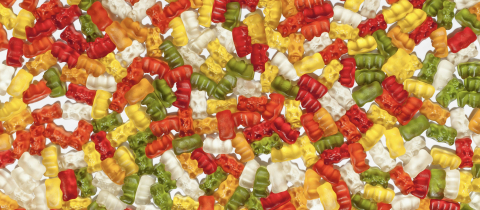This week’s column is guaranteed to generate controversy. There will be all sorts of anecdotes from people who say they have lost weight, gained energy and just feel better after eliminating wheat. I wouldn’t be surprised to hear claims that Lou Gehrig’s ALS was caused by eating Wheaties. And I’m sure I will be urged to just try a wheat-free diet instead of looking at the scientific literature.
Gluten-free diets and the mythologies surrounding them
You will never see Novak Djokovic’s picture on a box of Wheaties. Djokovic is a super tennis player and is easily in the same league as the athletes who have adorned the Wheaties box since 1934 when Lou Gehrig first urged us to try the Breakfast of Champions: “There’s nothing better than a big bowl of Wheaties with plenty of milk or cream and sugar.” Djokovic would disagree. No Wheaties for this champion. Diagnosed as “gluten intolerant” by his nutritionist, Djokovic has given up all foods that contain gluten, the mixture of proteins found mostly in wheat, barley and rye.
He claims that he feels “fresher, sharper and more energetic.” So how exactly was Djokovic diagnosed, given that there is no known test for gluten intolerance, aside from the variety known as celiac disease, which Djokovic does not have?
Djokovic’s “nutritionist” asked him to stretch out his right arm while placing his left hand on his stomach. He then pushed down on the tennis champion’s right arm and told him to resist the pressure, which he was able to do. Next, Djokovic was asked to hold a slice of bread against his stomach with his left hand while the nutritionist again tried to push down on his outstretched right arm. This time, he was able to push it down easily. The demonstration, Djokovic was told, showed that he was sensitive to gluten, which is why he had suffered so many mid-match collapses in his career.
Such a test, often referred to as “applied kinesiology,” is often used by “alternative” practitioners to diagnose allergies and nutritional deficiencies, as well as to promote the sale of “energizing” bracelets.
It has zero scientific validity, but that doesn’t mean that Djokovic doesn’t suffer from non-celiac gluten sensitivity. The correlation with the test may be accidental, but the condition may be real. Djokovic is convinced that avoiding gluten is a factor in his improved play and is not bashful about recommending that everyone give “gluten-free” a shot. And he is not alone. Others who sing the praises of a gluten-free lifestyle include such icons of science such as Gwyneth Paltrow, Miley Cyrus, Lady Gaga, Russell Crowe and Bill Clinton.
And then there is Dr. William Davis whose book Wheat Belly paints a picture of modern wheat as a satanic grain responsible for diabetes, high cholesterol, osteoporosis, cataracts, wrinkles, rashes, neuropathies, vitiligo, hair loss and schizophrenia — along with “man breasts,” “bagel butt” and of course, “wheat belly.”
If you are scientifically minded, it is worthwhile to read this book, just to see how masterfully Davis blends cherry-picked data, inflammatory hyperbole, misused science, irrelevant references and opinion masquerading as fact into a recipe for a cure-all.
Some of the “science” is just absurd. He talks about how wheat DNA has been mutated by exposure to sodium azide, and then points out that “the poison control people will tell you that if someone accidentally ingests sodium azide, you shouldn’t try to resuscitate the person because you could die, too, giving CPR.” The fact that sodium azide is a toxic chemical has nothing to do with its use in inducing mutations in genes. There is no azide in the product and inducing mutations to achieve beneficial traits is a standard technique used by agronomists.
Davis’s argument for wheat-causing osteoporosis is equally bizarre. He describes how wheat can give rise to sulphuric acid when it is metabolized. This is indeed correct. One of the amino acids in wheat protein, cysteine, does end up releasing some sulphuric acid in the body. And the body does use phosphates from bone to neutralize excess acid. The amount of acid released into the bloodstream from wheat is trivial; yet Davis calls it an “overwhelmingly potent acid” that rapidly overcomes the neutralizing effects of alkaline bases.” Poppycock. (Appropriately, that term originates from the Dutch term for “soft dung”.)
That, though, isn’t the worst of it. Davis panics readers with totally irrelevant statements about sulphuric acid causing burns if spilled on the skin. Get it in your eyes and you will go blind. True, but what does that have to do with traces formed in the blood from cysteine? Sulphuric acid in acid rain erodes monuments, kills trees and plants, Davis informs us. Yes it does. But linking this to eating wheat is an example of mental erosion. Davis also claims that proteins in wheat break down to peptides that have opiate-like activity and lead to wheat addiction. If that were true, we had better avoid spinach, soybeans, meat, dairy and rice, because these also contain the same protein fragments.
Davis also claims substantial weight loss by avoiding wheat. “If three people lost eight pounds, big deal,” he says. “But we’re seeing hundreds of thousands of people losing 30, 80, 150 pounds.” Really? Where is this documented? It isn’t surprising, though, that some people do lose weight on the “Wheat Belly” diet, given that cutting out wheat products results in a reduced caloric intake.
While wheat is not the great devil responsible for the plethora of ailments claimed by Davis, it is not completely innocent either.
“Non-celiac gluten sensitivity,” in which various symptoms resolve when gluten is eliminated from the diet, in spite of negative blood tests and negative biopsies for celiac disease, may affect as much as five to 10 per cent of the population.
Most of the evidence, though, is anecdotal; and similar improvements in health are described by people who avoid artificial sweeteners, shun MSG, eat only raw foods, engage in auto-urine therapy or walk barefoot to soak up the earth’s energy.
There is also accumulating evidence that improvements in health by avoiding gluten have nothing to do with gluten but rather with “fermentable oligosaccharides, disaccharides, monosaccharides and polyols” dubbed FODMAPs. These wheat components are poorly absorbed, and travel through to the colon where they provide a scrumptious meal for the bacteria that live there.
The problem is that these bacteria produce copious amounts of gas that distend the gut and cause pain as they dine on the FODMAPs. Unfortunately, other foods, including many fruits and vegetables, also contain these troublesome sugars, so a low-FODMAP diet is difficult to follow.
In the meantime, Novak Djokovic is winning titles and is winning other athletes over with his gluten-free diet.
Wouldn’t it be interesting to see how he would perform if somebody managed to sneak some gluten into his food?
I also wonder how Lou Gehrig would have done had he traded in his Wheaties for Rice Chex or Cornflakes.
I suspect just as well.







